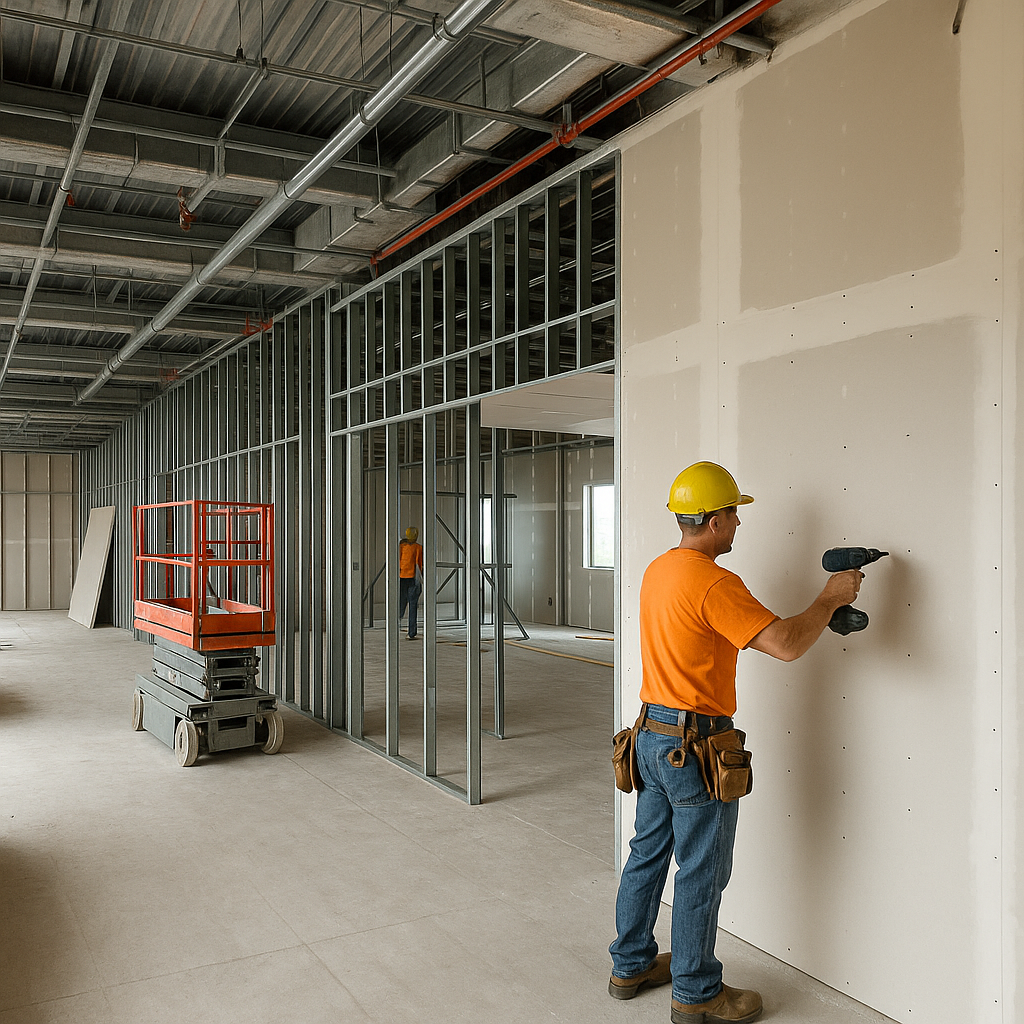
Open-concept designs have become a defining feature in modern commercial and institutional construction. With fewer partitions and a focus on large, continuous volumes, these spaces offer architectural elegance—but they also introduce challenges in drywall estimating that can’t be overlooked. Accurately forecasting material usage, labor requirements, and staging needs in open areas demands a more strategic, data-informed approach.
Unlike traditional compartmentalized layouts, open-concept spaces often feature wide spans, varying ceiling heights, and exposed structural elements. These aspects not only affect the volume of drywall material but also introduce complications in access, coordination, and safety compliance.
Because open spaces rarely follow repetitive room modules, traditional square footage pricing models can break down. Assemblies customized for unique wall types, ceiling designs, and specialty details offer the flexibility needed to handle these non-standard conditions. These assemblies should include:
Open-concept environments don’t just challenge measurement—they challenge predictability. That’s why incorporating subjective inputs (such as anticipated foot traffic, visibility, and complexity of architectural detail) becomes essential. Estimators using Active Estimating can dynamically adjust assumptions and quantify these factors early in preconstruction, resulting in more accurate bids and greater confidence across the team.
In open layouts, work sequencing becomes more critical. Multiple trades often share access points, lifts, and floor space. Estimators must anticipate coordination challenges and account for labor inefficiencies caused by shared workspace and rework. Integrating construction phasing into your estimate helps flag these issues before they affect the bottom line.
On a recent multi-level mixed-use project, estimating teams using data-centric workflows were able to reduce estimation cycles by 65% in large open lobby areas. By applying dynamic assemblies and historic productivity rates, the team could validate installation hours based on similar previous projects—an approach that would be nearly impossible using static spreadsheets.
When handling projects that include large open areas, estimators need real-time insights, not just initial guesses. Continuous feedback loops—where estimates are refined as models evolve—ensure consistency between design intent and budget performance. Using a platform that blends historical project data with live model inputs offers a new level of predictability in drywall estimating.
Systems built on drywall estimating logic but flexible enough to incorporate variable factors like geometry and access limitations provide the agility needed to handle the open-concept trend confidently.
Estimating drywall in open-concept spaces requires a shift in mindset—from surface-based to systems-based, from static pricing to dynamic intelligence. By embracing a data-driven approach and leveraging customizable assemblies, estimators can deliver both speed and accuracy—helping architects and general contractors bring expansive design visions to life without budget surprises.
Contact Information:
Active Estimating
508 2nd Street, Suite 208
Davis
California
95616
Rich Schoener
richard@activeestimating.com
(877)
Schedule a personalized demo to see how Active Estimating can work for your specific needs.
